Plants have long been considered thoughtful gifts, symbolizing life, growth, and renewal. Among them, palm trees stand out for their exotic appearance and the sense of calm they bring to any space. A palm tree in a pot is not only a decorative element but also a meaningful present suitable for various occasions. With the right care, it can thrive indoors for years, serving as a living reminder of a special moment.
In this article, we will explore when it is appropriate to gift a potted palm tree and how to maintain its health. We will also share insights from plant enthusiasts and horticulturists on creating the right conditions for these tropical plants to flourish. Whether you are considering gifting one to a friend, colleague, or family member, understanding the basics of palm care will ensure your gesture is both symbolic and practical.
The popularity of indoor palms has grown steadily, especially in regions where tropical plants are associated with luxury and relaxation. For instance, many people search for a potted palm tree in Dubai as a way to bring a touch of greenery and serenity into modern living spaces. This global trend shows how versatile palms have become in interior design and gift culture.
When to Gift a Palm Tree in a Pot
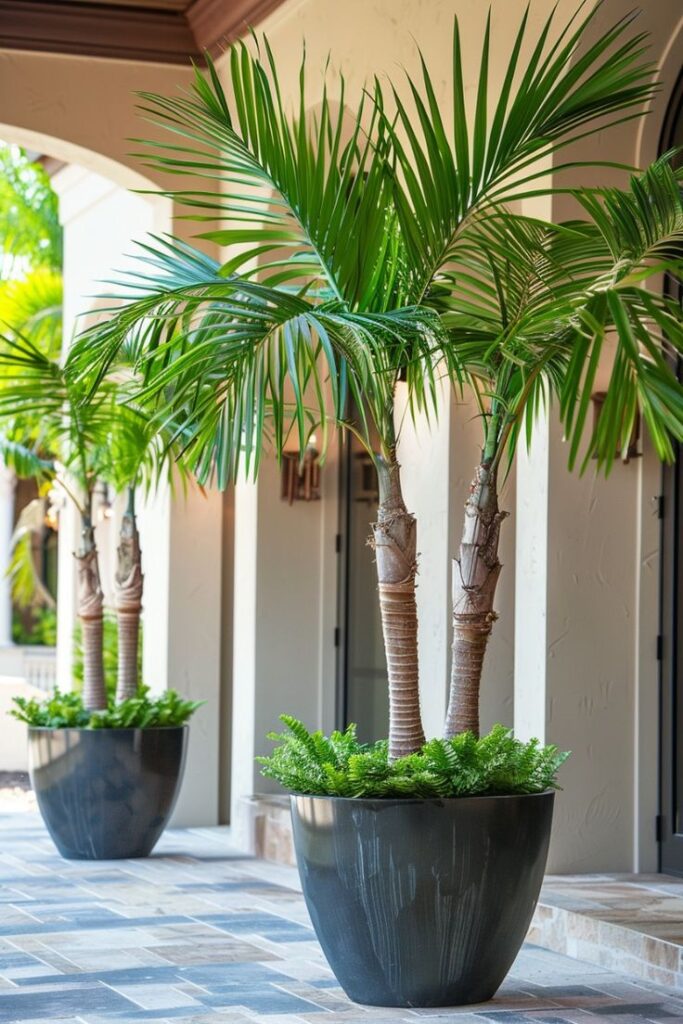
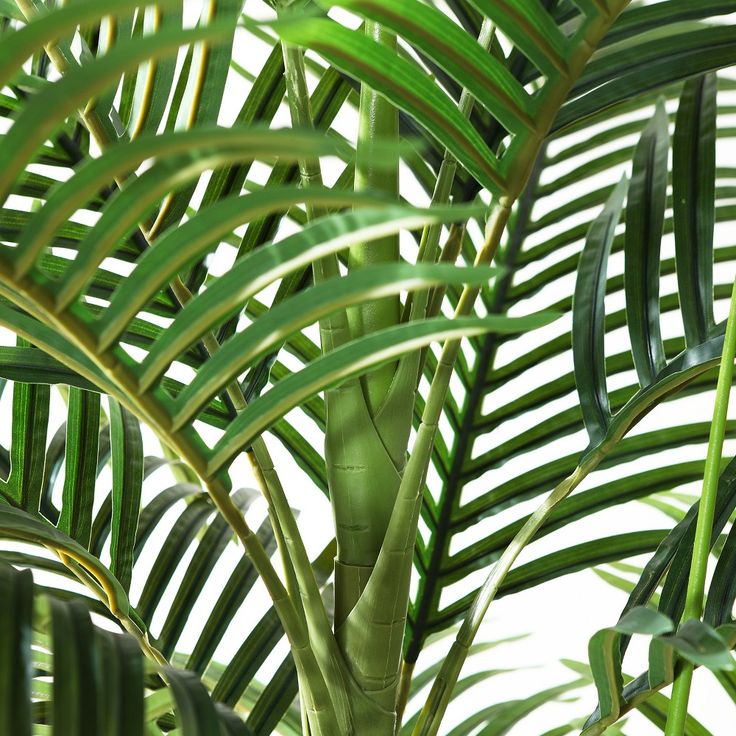
Housewarming Celebrations
A palm tree makes an excellent housewarming gift because it represents stability, prosperity, and harmony in a new space. Its lush leaves add vibrancy to a room, instantly transforming an unfamiliar house into a welcoming home.
Weddings and Anniversaries
Palms symbolize endurance and timelessness, making them a meaningful choice for weddings and anniversaries. A thriving palm tree can accompany a couple through many years, growing alongside their relationship.
Birthdays and Milestones
For someone who enjoys gardening or has an appreciation for nature, a potted palm tree can be a memorable birthday gift. It also works well for milestones such as a graduation, promotion, or retirement, symbolizing a new stage in life.
Corporate Gifting
In professional settings, palms can serve as elegant corporate gifts. They bring a touch of green into offices and meeting rooms, while also representing growth and sustainability, values that align with many modern businesses.
Types of Palm Trees Suitable for Pots
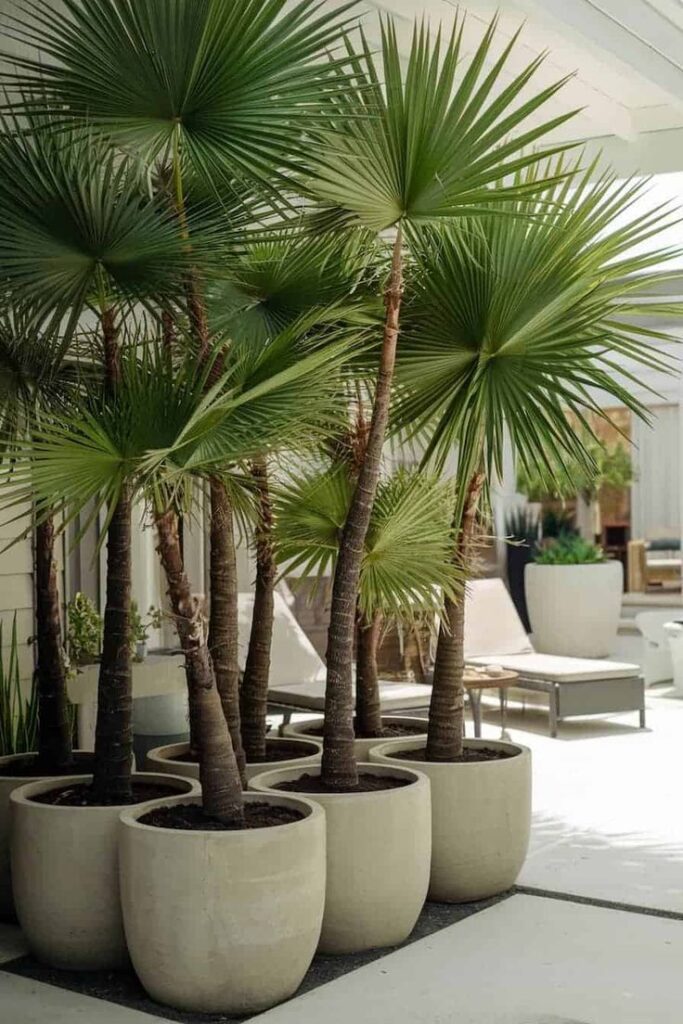
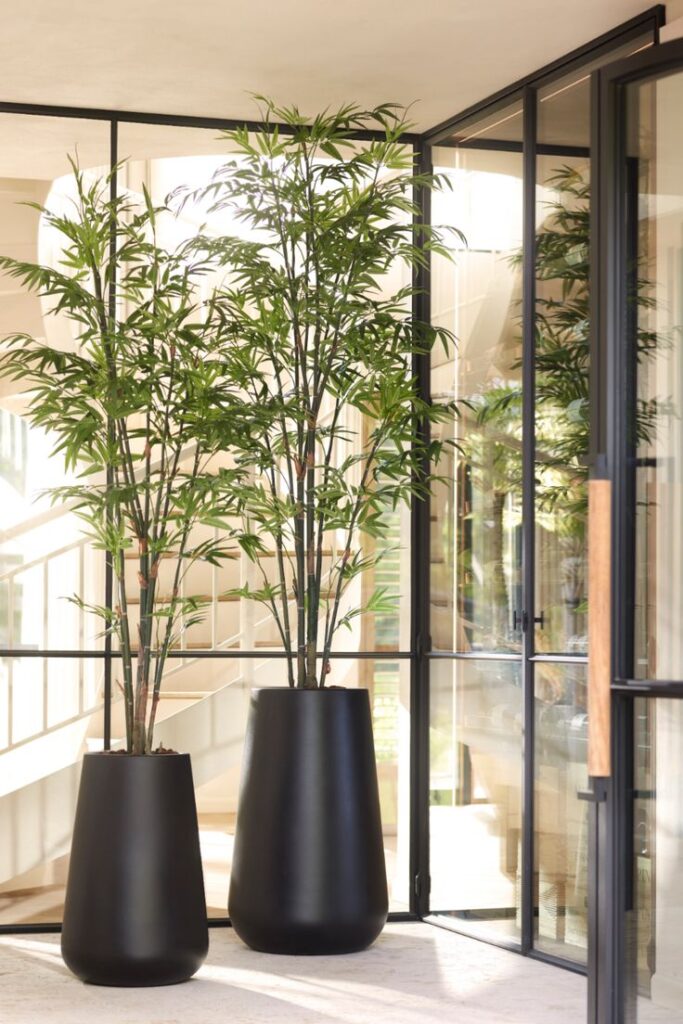
Not all palm species adapt well to container living. Some grow too large or require conditions that are difficult to replicate indoors. Popular indoor-friendly palms include:
- Areca Palm (Dypsis lutescens): Known for its feathery fronds and air-purifying qualities.
- Kentia Palm (Howea forsteriana): A hardy variety that tolerates lower light conditions.
- Parlor Palm (Chamaedorea elegans): Compact and easy to care for, often used in small apartments.
- Majesty Palm (Ravenea rivularis): A taller option with graceful leaves, suitable for larger rooms.
How to Care for a Potted Palm Tree
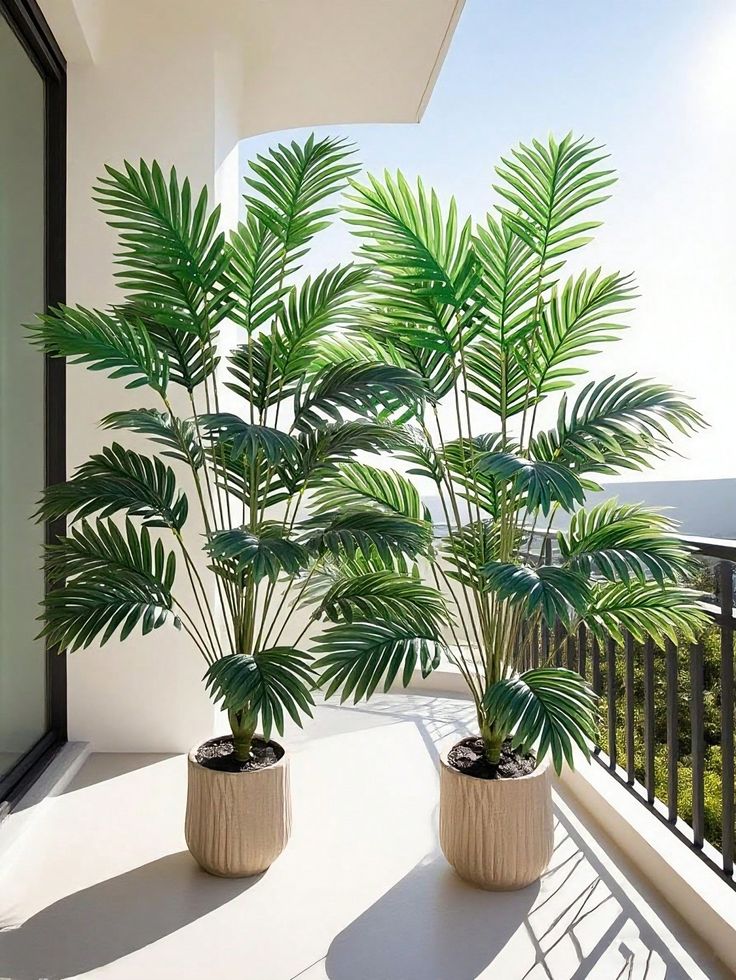
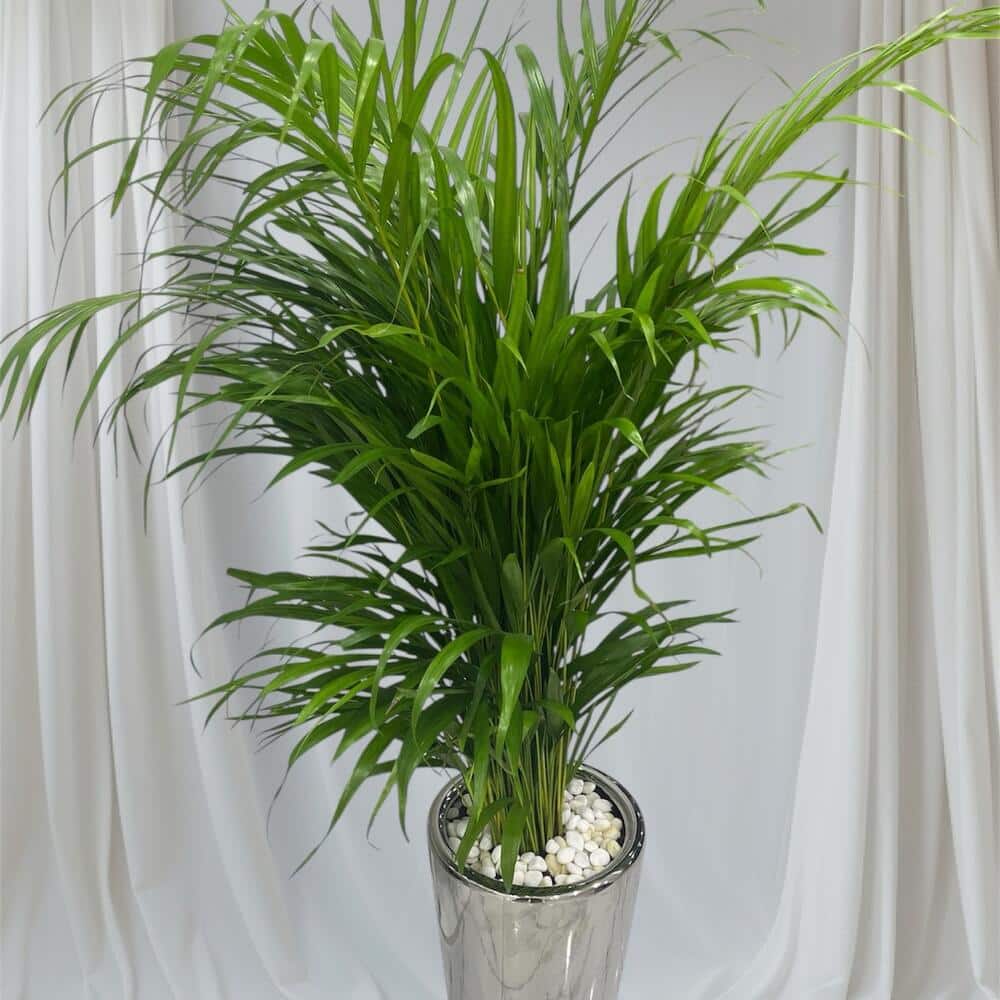
Light Requirements
Most palms prefer bright, indirect sunlight. Direct rays can scorch their leaves, while too little light may cause slow growth. A spot near a window with filtered light works best.
Watering Practices
Palms like evenly moist soil, but not soggy conditions. Overwatering can lead to root rot, while underwatering may cause leaf tips to dry out. A general rule is to water when the top inch of soil feels dry.
Humidity and Temperature
Being tropical plants, palms thrive in higher humidity. In dry climates or during winter heating, misting the leaves or placing a humidifier nearby helps. They generally prefer temperatures between 18°C and 26°C (65°F–78°F).
Soil and Fertilizer
Well-draining potting soil is crucial. Adding perlite or sand improves drainage and prevents waterlogging. During the growing season (spring and summer), a balanced liquid fertilizer every four to six weeks supports healthy growth.
Repotting and Pruning
Palms grow slowly and usually need repotting only every two to three years. When repotting, choose a slightly larger container to avoid excess soil that retains moisture. Pruning is limited to removing brown or damaged fronds, as cutting healthy leaves may weaken the plant.
Common Problems and Solutions
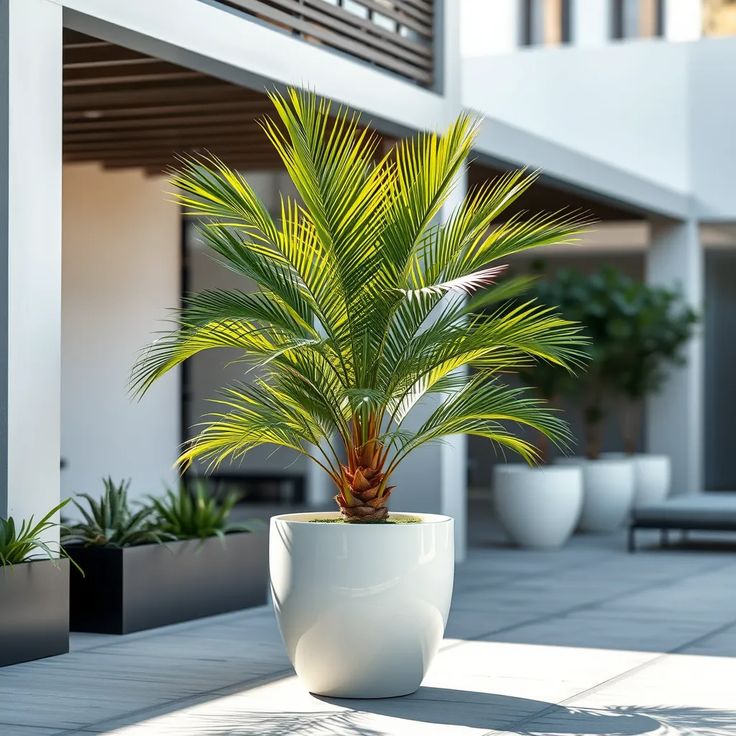
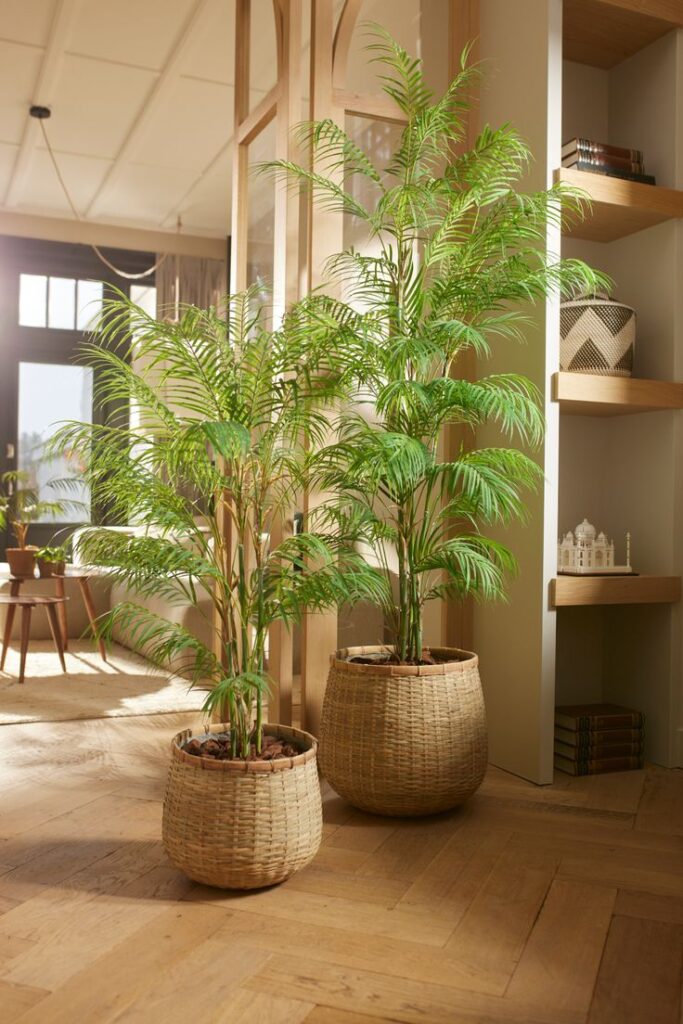
- Yellowing Leaves: Often caused by overwatering or poor drainage. Adjust watering frequency and check the soil.
- Brown Tips: Usually due to dry air or inconsistent watering. Increase humidity and water more evenly.
- Pests: Spider mites and mealybugs can appear in dry conditions. Wiping leaves with a damp cloth or using insecticidal soap helps control infestations.
Symbolism of Palm Trees
Palms have cultural significance in many societies. They are often associated with peace, victory, and resilience. In some traditions, gifting a palm tree represents wishing someone success and strength to overcome challenges. This symbolism adds depth to the act of presenting one as a gift.
Creating the Right Atmosphere with a Palm


Beyond being a plant, a palm tree contributes to the overall ambiance of a room. Its long, arching fronds bring movement and softness to otherwise rigid interiors. Many people use palms to create a tropical or Mediterranean feel indoors, reinforcing a sense of relaxation.
Placing a potted palm in a living room, office, or entrance hall can subtly change the mood of the space. It provides not only aesthetic value but also psychological comfort, reminding us of nature’s calming effect.
FAQ
How long can a palm tree live in a pot?
With proper care, many indoor palm varieties can live for several decades in pots. The key is repotting when necessary, providing enough light, and maintaining consistent watering practices.
Can a potted palm tree be kept outdoors?
Yes, palms can be placed outdoors in warm climates during the summer months. However, they should be brought indoors if temperatures drop below 10°C (50°F) to avoid damage.
Do palm trees in pots purify the air?
Several palm species, such as the Areca and Parlor palms, are known for their air-purifying qualities. They can help remove toxins and improve indoor air quality, making them both decorative and beneficial.
- 0shares
- Facebook0
- Pinterest0
- Twitter0


